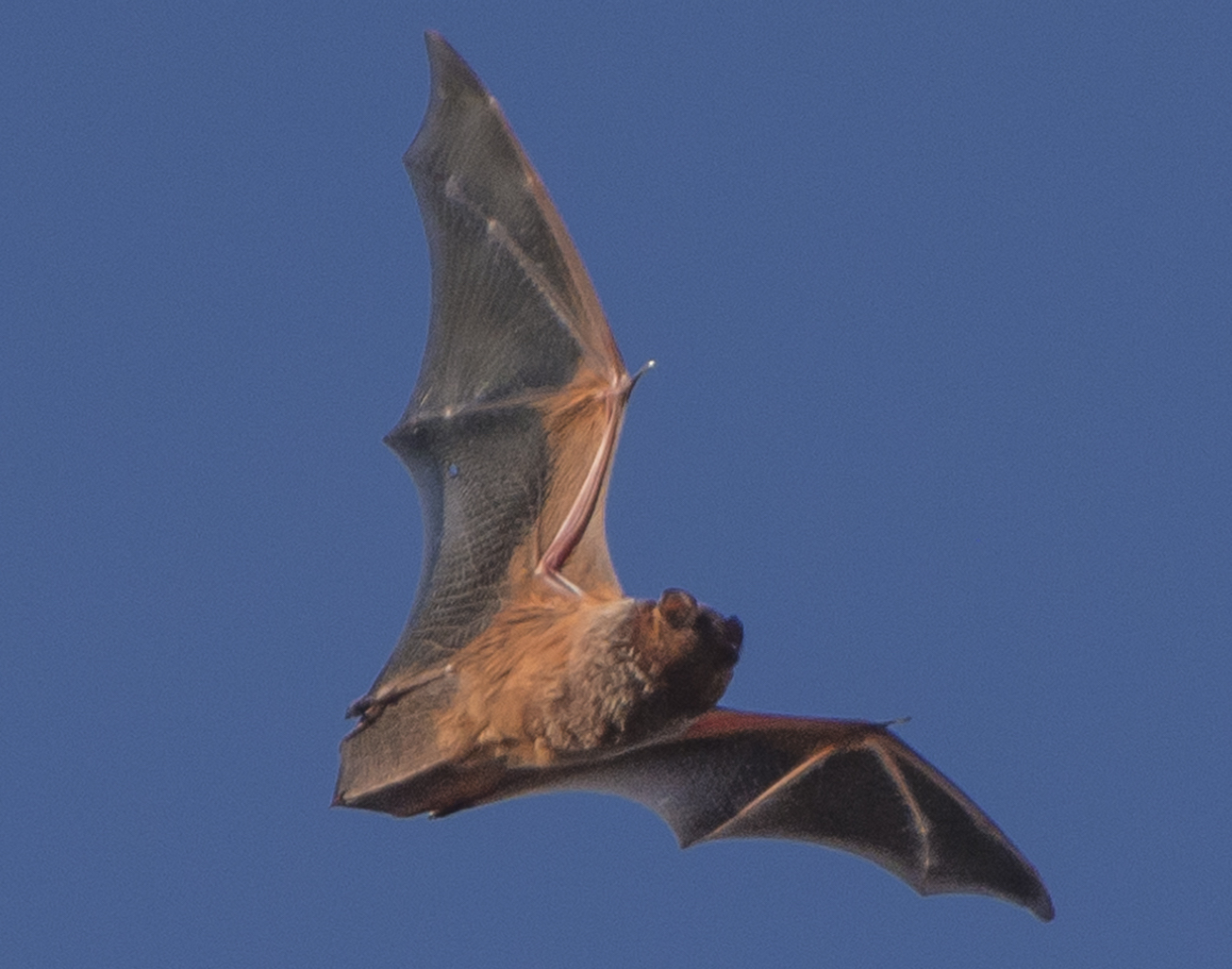|
| Distribution |
It occurs statewide in NC, undoubtedly present in all 100 counties.
Occurs throughout the eastern half of the United States and southern Canada, south into Mexico. |
| Abundance |
Common to abundant (at least for a bat species) across the entire state, and has been found from the higher mountains to the Outer Banks. It is the most numerous bat species in the state. It has perhaps declined slightly across the state in recent decades owing to a decline in aerial insects from air pollution, though this might just be speculation. |
| Seasonal Occurrence |
Year-round, with some migration likely involved. It generally goes into torpor in winter, but is active on some warmer nights in winter. |
| Habitat |
A variety of forested areas, from conifer to hardwood; usually roost in trees or shrubs fairly close to open water or a field/cleared area. They can often occur in semi-wooded residential areas, as well. They roost singly in vegetation of trees and shrubs, and are not found inside buildings or caves/mines. It shows no inclination toward coloniality. |
| Behavior |
This is one of the earliest bats on the wing in the evening, at times seen before sunset, such that an observer can see the rufous/rusty color of its fur. They often feed around street lights, unlike most bat species. |
| Comments |
A few details of its seasonality and winter behavior are not well understood, but this species is by far the most frequently captured in many, if not most, mist-netting operations. For some odd reason, NatureServe has moved the Global Rank from a secure G5 to a surprising G3G4. This website sees little reason for this, considering that many states, including NC, rank it as S5. |
| Origin |
Native |
| NC List |
Official |
 State Rank State Rank |
S5 |
| State Status |
|
 Global Rank Global Rank |
G3G4 [G5] |
| Federal Status |
|
| subspecies |
Lasiurus borealis borealis |
| other_comName |
Red Bat |
| synonym |
|



